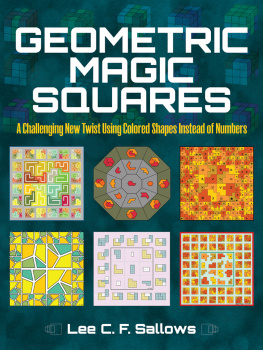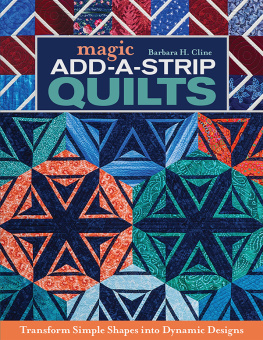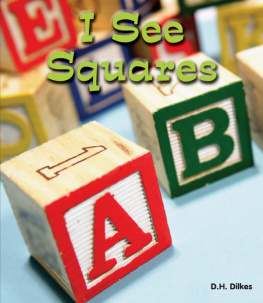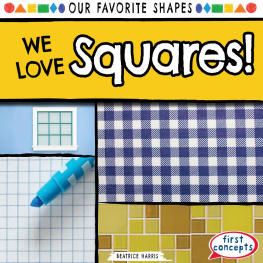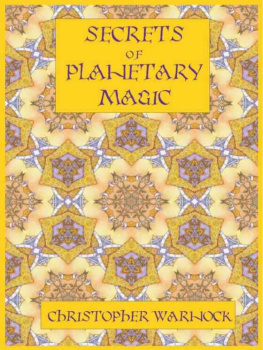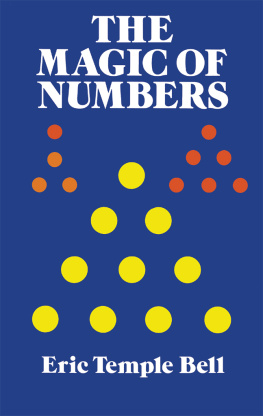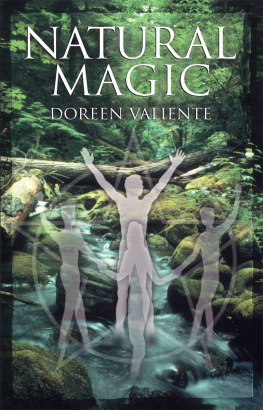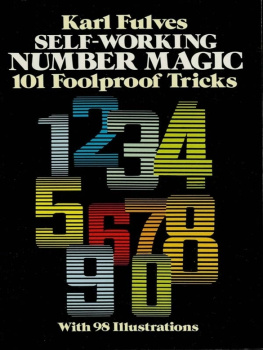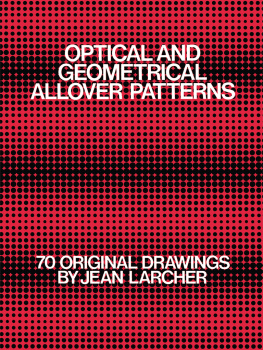GEOMETRIC MAGIC SQUARES
A Challenging New Twist Using Colored Shapes Instead of Numbers
LEE C. F. SALLOWS
DOVER PUBLICATIONS, INC.
Mineola, New York
Copyright
Copyright 2013 by Lee C. F. Sallows
All rights reserved.
Bibliographical Note
Geometric Magic Squares is a new work,
first published by Dover Publications, Inc., in 2013.
International Standard Book Number
eISBN-13: 978-0-486-29002-7
Manufactured in the United States by Courier Corporation
48909401
www.doverpublications.com
Contents
For Evie,
Alright Rat?
Note: The numbers in square brackets in the text refer to the References at the end of the book.
Foreword
It is now almost forty years since a rainy afternoon in Nijmegen when I found that a fit of absent-minded doodling had inadvertantly developed into an attempt to construct a magic square. I was twenty-six at the time, a Brit recently arrived in Holland, where I was destined to remain domiciled down to the present day. Nijmegen is a town on the eastern side of the Netherlands, not far from Arnhem, close to the border with Germany. The reasons that had brought me to Nijmegen might be of interest in a different context, but are of no relevance to the present account. Like the First Patriarch of Zen Buddhism, I had just blown in from the West. The year was 1970, and I had landed a job as an electronics engineer at the local university, getting in via the back door as a member of their non-academic staff. The lab was new and set amid woodland. Compared to the working conditions Id known back home, this was paradise. Also, the technical equipment available in the department was years ahead of anything Id seen in England. Moreover, my income had doubled. Small wonder then that I stayed, although little did I then realize that it would be for life.
I cannot now even recall how or where I had first learned what a magic square is. The most probable source would have been one of the comics I read as a boy growing up in London, most likely my favourite, The Eagle, which enlivened its pages with verbal and mathematical curiosities, and had introduced me to my first palindrome, Evil rats on no star live. A palindrome is a sentence that reads the same backwards as it does forwards. My own name can be appended backwards to itself to produce the almost-palindrome, Lee Sallows swollas eel. If you like palindromes then there is a good chance you will like magic squares too. It is a thirst for symmetry shared by many. In any case, the concept of a magic square had somehow lodged in my mind, so that the purpose guiding my doodling hand all those years later was at least clear. It was to arrange the numbers from 1 to 9 in a square grid of nine cells so that the sum of any three of them lying in a straight line would be the same. Eight such straight-line-triplets can be traced in a square of nine cells, three of them forming its rows, three its columns, and two its corner-to-corner diagonals. Warming to my task, it seemed to me sufficiently wonderful that nine numbers could be found to realize the desired result at all, let alone that it could be achieved using the natural numbers from one to nine. However, I could clearly remember having seen such a square somewhere before, so there was no doubt in my mind that it could be done. In fact, the puzzle presents little difficulty, and within a few minutes I was able to examine my solution at leisure. It can be seen in of the Introduction, the very first illustration in this book.
To the receptive eye there is something deeply satisfying in such a square. See, for example, how the four pairs straddling the centre number each sum to ten. There are just four possible ways to split ten into two distinct whole numbers, and all of them appear here. Similarly, there are just eight possible ways in which three different decimal digits can combine to yield 15. Again, every one of them is to be found occupying a row, column, or diagonal in the magic square.
In my minds eye, I imagined the numbers replaced by weights of 1, 2, 3,, standing on a square board at nine spots corresponding to the exact centre of each cell in the 33 grid. Ideally, these weights would all be of the same size and shape. Underneath the board, at its exact centre, was a pivot. And upon this pivot the board would perch in perfect balance, a reflection of the numerical balance realized in the magic square. Years later I saw a photograph of an almost identical construction due to Craig Knecht, only with the board suspended from its centre by a wire, instead of balanced on a pivot. Craig had the clever idea of building his weights from different numbers of identical metal rings, or washers, piled atop each other on vertical posts that stuck upwards from the centre of every square cell.
But back to that rainy day in Nijmegen. Re-examining my new plaything, questions began to form. Could a second magic square be produced by arranging the same numbers differently? What of alternative numbers? Simple and pleasing as are 1,2,3, , clearly others might be used to similar effect. Then again, were larger magic squares to be found? Could the numbers from 1 to 16 be used to produce a 44 specimen? Lets see, supposing we call the number in the top left-hand cell I had no training in mathematics, but I found myself trying to recall some of the half-forgotten algebra learned at school. Little did I know it, but I was playing with fire. There are some people for whom magic squares are more addictive than cocaine. I should know; here I am forty years later and still hooked.
It was soon after this that I first ran across Martin Gardners Mathematical Games column in Scientific American, and was thus introduced to the world of recreational mathematics. With his genius for making difficult things easy, Gardner led me into that world until I felt confident enough to start making my own way. There was no Internet in those days. It was only through Martin Gardners writings that I became aware of the extensive literature on magic squares, a literature that I now began to explore. However, beyond this there were the rows of bound volumes of Scientific American I found lining the shelves of our university library. The series went back some twenty-five years, and every single issue contained an as-yet-to-be-read Mathematical Games column. It took me a around a month to work through the entire series, an exercise from which I emerged with more or less glazed eyes and a burning desire to contribute to the field something new of my own. Gardner had woken me up to the fact that many of the ideas and inventions found in Mathematical Games were the products of amateurs; that you didnt need a diploma to do your own research, that permission is not required before making a new discovery.
It was, in fact, in the field of magic squares that I landed my first ever new find, which was an improved algebraic generalization of 44 squares. A trifling innovation, it was nonetheless poignant for me in showing that it was indeed possible for a rank amateur to make an original discovery, an insight from which I never looked back. Thus, while no mathematical mountaineer, I set out on my own to explore low-level routes, discovering in the process a great liking for mathematical wordplay. It was in this way that what had become a compulsive habit of playing with words and numbers lead eventually to the idea of alphamagic squares, a frivolous invention that has come to enjoy a modest renown. Some examples can be found in this volume. Still, later, these were followed by two more novelties in the shape of septivigesimal magic squares and ambimagic squares. Septivigesimal is just a long word for twenty-seven-based. It refers to a certain gematria or system for interpreting words as numbers. The magic squares referred to are ones in which
Next page
